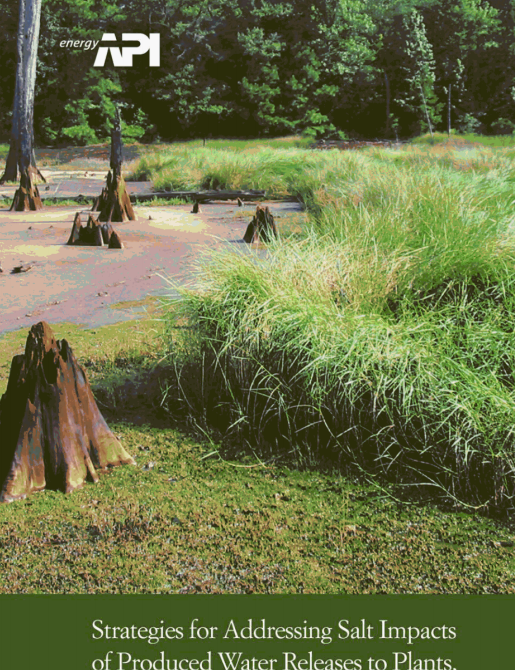API Publ 4758:2006 pdf download.Strategies for Addressing Salt Impacts of Produced Water Releases to Plants,Soil, and Groundwater.
Key assumptions and limitations of tte Planning Model Include: 1) salts are mixed evenly throughout the soil; 2) the percentage of the rainfall that infiltrates through the soil to groundwater is proportional 10 the amount of rainfall; 3) the recharge rate is the 8O’ percentile of recharge rates from data compled from API Publication 4643:4) almost aM the salts in affected soils can be flushed out with 12 inches of recharge (from API 4663): 5) no capillary effects. evaporation, or other transport processes except advection. mixing. and dispersion in the saturated zone are present: 6) no density effects are assumed In transport of chloride In groundwater: 7) salt is mixed throughout the water-beating unit: B) a 2x safety factor is assumed: and 9) potential impacts only apply to the uppermost waler-bearing unit, and NOT to deeper. regional aquifers. When applied to site conditions presented in API Publication 4734. the Planning Model was more likely to show higher chionde concentrations in groundwater than chloride concentralions predicted by HYDRUS. a much more sophisticated leaching model
Other Methods
Other approaches can also be used to provide more accurate estimates of chloride migration. Key resources include:
• API Publication 4734: In this study, the authors performed several hundred computer simulations with the HYDRUS model to determine the sensitivity of groundwater underlying a produced waler release to various factors such as release volume, chloride concentration at the produced water, depth to groundwater. soil type, rainfall and hydrology of the area, and other factors. Review of this document can provide additional information regarding the impact of produced water releases on groundwater,
• More Detailed Computer Models.
API Publ 4758:2006 pdf download
